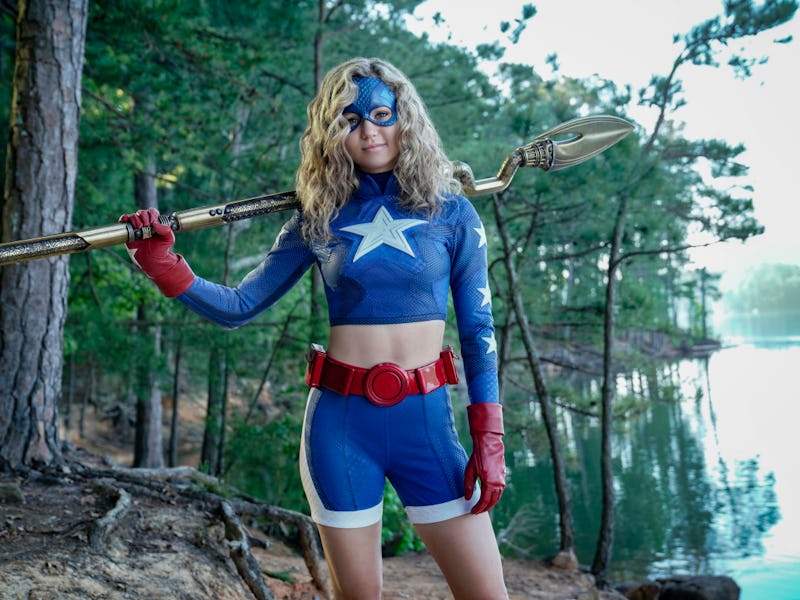Stargirl already understands a superhero lesson Marvel didn't for 8 years
"Icicle" freezes Stargirl in its tracks with a terrible lesson about the superhero business: Failure.

It only took Stargirl three episodes to explore what Marvel needed almost eight years and thirteen movies to do: Failure.
In "Icicle," the third episode of The CW/DC Universe's newest series Stargirl, the title hero suffers her first major failure as a crime-fighter. It's the first heavy moment in what has been thus far a breezy, sunny superhero series. And while the scene itself could be unintentionally comedic given its emotional whiplash, it will be an important one as Stargirl learns that there is great responsibility in her great power.
Spoilers for Stargirli Episode 3, "Icicle" ahead.
In Stargirl, Courtney Whitmore (lead Brec Bassinger) is still adjusting to Blue Valley when she befriends Joey, a dorky but harmless student trying his luck at stage magic for a talent show. (He also happens to be the son of an actual magical supervillain, The Wizard, but he seems unaware of daddy's past life.) Meanwhile, the villain Icicle, who Courtney thinks killed Starman/her father, resurfaces and challenges Stargirl to a fight.
In the end, it comes down to the ice. When the school bus carrying students — including Joey — drifts atop a frozen bridge caused by Icicle, Stargirl and her super stepfather Pat Dugan (Luke Wilson) team up to re-balance the bus in a scene reminiscent of Man of Steel. But Icicle blows one final breeze, causing Joey to wander right into oncoming traffic. Joey suddenly becomes the first casualty in Stargirl's rookie season.
Luke Wilson and Brec Bassinger in 'Stargirl' Episode 03, "Icicle."
Stargirl is a model superhero show, one that epitomizes the genre through a youthful lens. But the series isn't wasting any time going to emotionally difficult places that even most DC or Marvel adaptations tend to resist for much longer.
From its start in 2008 with Iron Man to the release of Captain America: Civil War in 2016, the Marvel Cinematic Universe wrapped up its superheroic adventures in a story structure that more or less resembled Saturday morning cartoons. Sure, the writing was "older" (PG-13) and the action was more hard-hitting, but when masked Avengers still solved their problems with one final punch to a villain's face, not a lot was different. Civilian casualties were more or less prevented with sheer, stunning luck.
Then Civil War happened. Though the film was inspired by the 2006 Marvel Comics series of the same name — where misfit reality TV superheroes set off an explosion that levels a small town, causing a political upheaval over superheroes — the 2016 movie amplified the concept of superhero collateral damage and its consequences for a wider audience. The trailer for Civil War first revealed the canonical death tolls for the Avengers' biggest battles.
Like the Avengers' guilt over New York or Washington D.C., Stargirl's one casualty (so far) isn't actually her fault. Stargirl didn't freeze the bridge, nor did she cause Joey to walk onto the ice. But the great paradox of superheroes is that their existence to prevent danger only attracts more of it. People are going to die just by being within orbit of heroes like herself. Them's the rules of superheroes. At 15 years old, Courtney has learned a harsh lesson the adult Avengers didn't know how to deal with, leading them to fight each other and splinter off permanently until it was time to fight Thanos.
This is not to stoke any fandom fires. Rather it's a sign of the maturity of the superhero genre that a breezy show like Stargirl can so soon explore the ugly burdens of what superheroic responsibility actually could be. This is perhaps Stargirl's defining moment. After the trauma of the event, Pat takes Courtney to the old Justice Society headquarters, which inspires Courtney to form a new JSA. It took the loss of her first friend, but soon enough she'll have a family of her own.
Stargirl streams Sundays on DC Universe and airs Tuesdays on The CW at 8 p.m. Eastern.